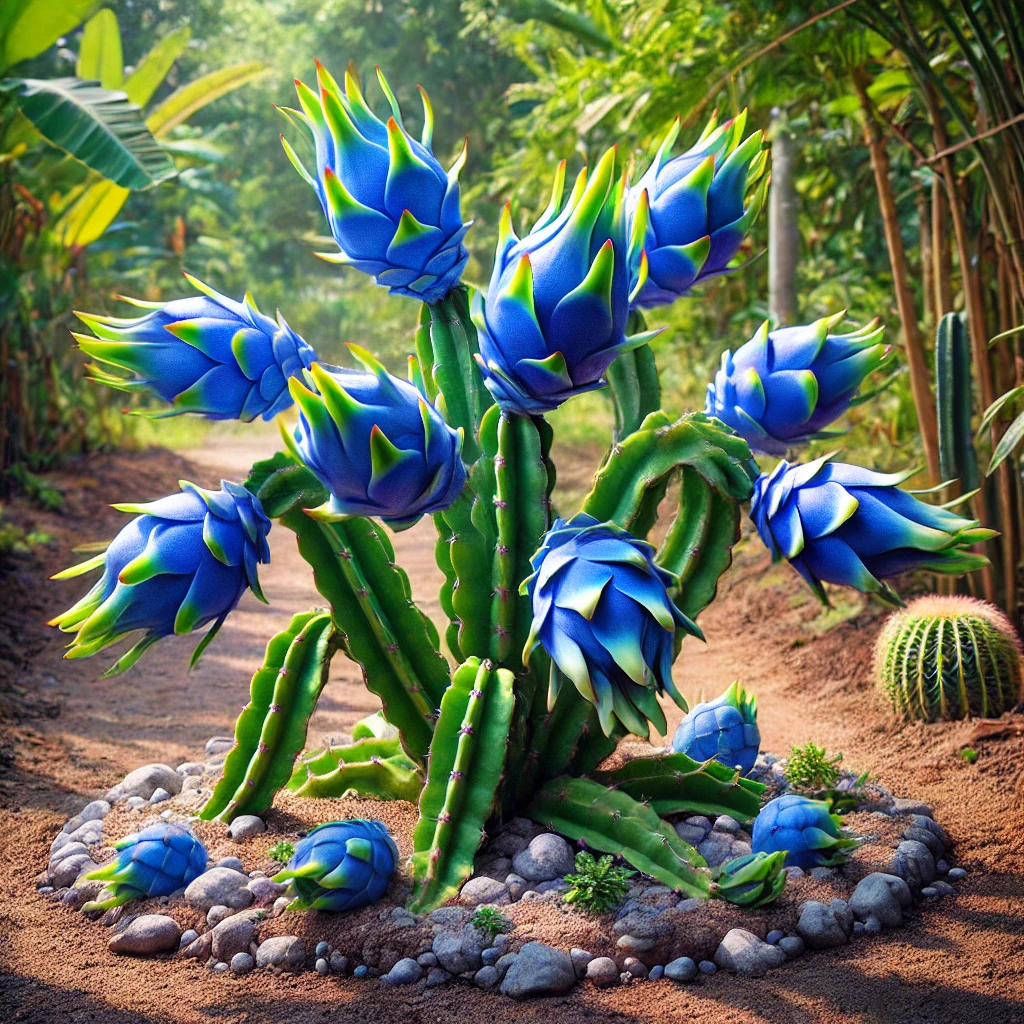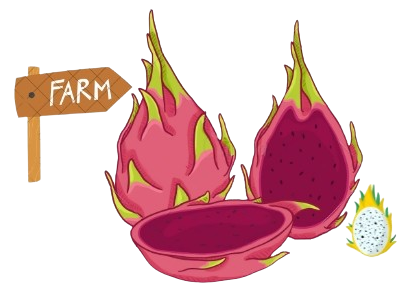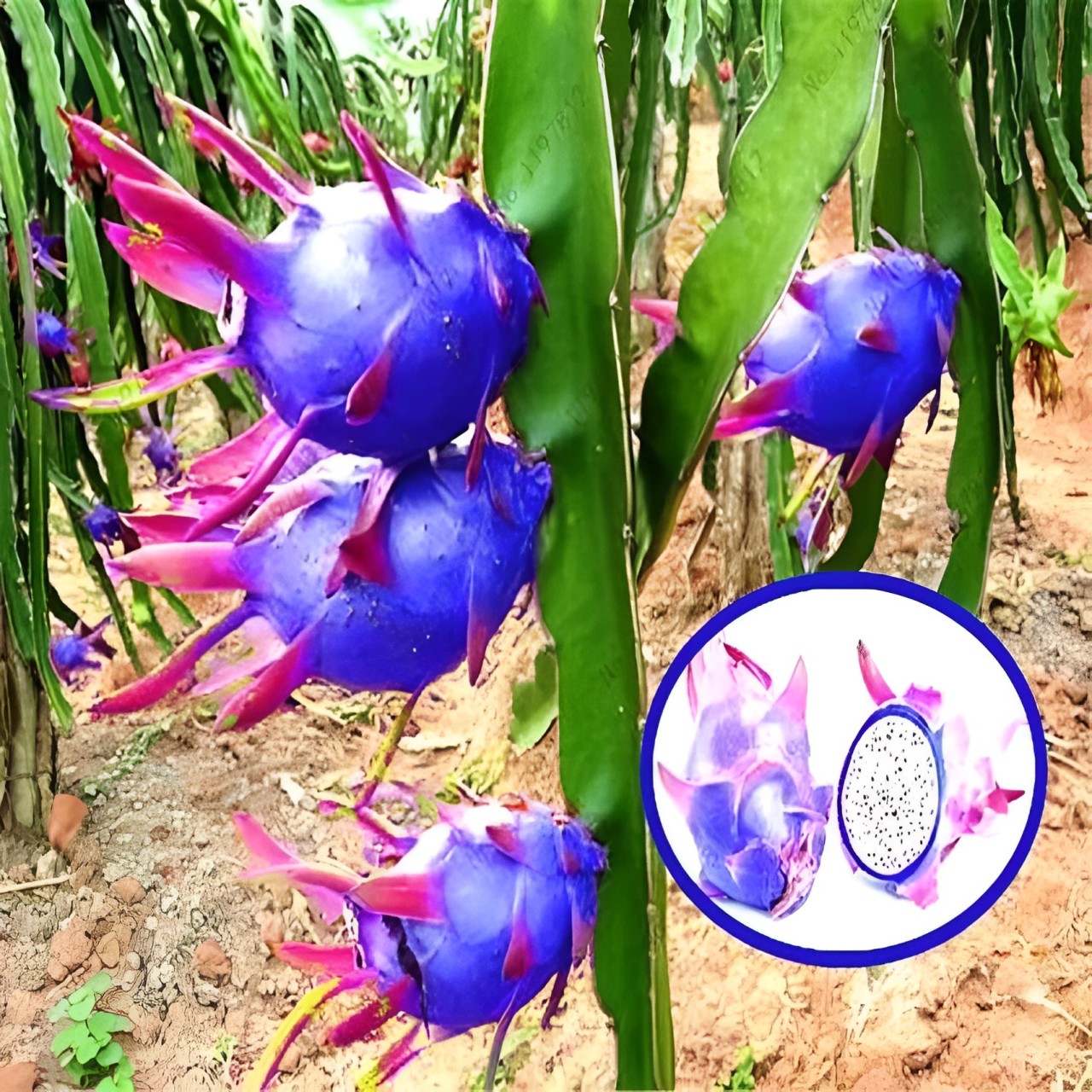Rare Blue Dragon Fruit, also known as Pitaya, is considered a rare variation of the dragon fruit family. Dragon fruits have become increasingly popular around the world, but Blue Dragon Fruit has caught more attention due to its unique color and potential health benefits. Traditionally, dragon fruits are available in three main varieties: red pulp, white pulp, and yellow pulp. However, the intriguing blue variety has sparked curiosity, leading many to wonder why it’s so hard to find. In this article, we will explore the reasons behind its scarcity and delve deeper into the science and myths surrounding this rare fruit.
What is Rare Blue Dragon Fruit?

Dragon fruit, or pitaya, is a fruit that belongs to the Cactus family and is grown in various parts of the world. The traditional dragon fruit varieties come in shades of red, white, and yellow. These fruits have become well-known for their unique appearance and refreshing taste. However, the blue dragon fruit, despite being highly sought after, is not commonly available.
The blue variety has not yet been officially recognized or widely cultivated, which makes it a rarity in the market. Some people wonder whether it’s just a myth or if it truly exists.
The Nutrition of Blue Dragon Fruit
Dragon fruits, including the blue variety (if it were to exist), are known for their high nutritional value. Here’s what makes them beneficial:
- Antioxidants: Rich in anthocyanins, these antioxidants help fight free radicals in the body, promoting healthier skin and reducing signs of aging.
- Vitamin C: Known for boosting immunity and improving skin health, Vitamin C is present in abundant quantities in the fruit.
- B Vitamins: Essential for energy production, dragon fruits contain thiamine, riboflavin, and niacin.
- Minerals: Dragon fruits are a good source of iron and phosphorus, which help in oxygen transport and bone health.
- Fiber: The high fiber content in dragon fruit aids digestion and promotes gut health.
- Water Content: With a high water content, dragon fruit is excellent for hydration.
The Health Benefits of Blue Dragon Fruit
If the blue dragon fruit were to exist, it would have the same impressive health benefits as the traditional varieties, including:
- Antioxidant Protection: Blue dragon fruit contains anthocyanins, which help protect the body from oxidative stress.
- Immune System Boost: The Vitamin C content strengthens the immune system, helping to ward off infections.
- Improved Digestive Health: High in fiber, blue dragon fruit would aid in digestion, relieve constipation, and promote the growth of beneficial gut bacteria.
- Heart Health: Its ability to manage cholesterol levels and its iron content helps in maintaining heart health.
- Weight Management: With its low calorie and high fiber content, blue dragon fruit can help control weight.
- Blood Sugar Control: Preliminary research suggests that dragon fruit may aid in regulating blood sugar levels.
The Taste of Blue Dragon Fruit
If blue dragon fruit were real, it would likely have a delightful taste. Here’s what the flavor profile might be:
- Sweetness: The fruit would likely have a mild, refreshing sweetness similar to kiwi and pear.
- Tartness: A light tartness would add an interesting twist to its flavor, making it even more enjoyable.
- Crispy Seeds: The small, crunchy seeds would provide a delightful texture, similar to the other varieties of dragon fruit.
Ways to Incorporate Blue Dragon Fruit in Your Diet
If you manage to find blue dragon fruit, here are a few ways to enjoy it:
- Fresh Snacks: You can eat the fruit fresh, cut into pieces, as a light and refreshing snack.
- Juices and Smoothies: Blue dragon fruit can be blended into smoothies or juices, paired with other fruits for a tropical flavor.
- Salads: Add fresh chunks of the fruit to your salads for a healthy and exotic twist.
- Desserts: Blue dragon fruit could be used in making desserts like ice creams, sorbets, or even as a topping for cakes.
Blue Dragon Fruit – A Reality or Just a Myth?

is blue dragon fruit real? The myth of blue dragon fruit has grown significantly due to photos and videos circulating on the internet. Many people have been fascinated by the idea of this rare fruit. However, it is essential to address the reality:
- Photo Manipulation: A large number of the images and videos of blue dragon fruit are the result of photo editing. These manipulated images create a visual illusion of a blue dragon fruit.
- China’s Experiment: Some agricultural experts believe that China may be experimenting with hybrid dragon fruit varieties. However, these experiments have not been confirmed to yield a blue fruit.
- Hybrid Possibilities: There are speculations that blue dragon fruit could be a hybrid created by crossbreeding different dragon fruit varieties. However, there is no official record of such a hybrid being registered.
- Genetic Limitations: The natural color of dragon fruit is white, red, or yellow. There is no known genetic variation that can produce a blue color in the fruit. Thus, producing a true blue dragon fruit would be extremely difficult from a genetic standpoint.
The idea of a blue dragon fruit may be exciting, but until scientific proof emerges, it remains more of a myth or a marketing gimmick rather than an established reality.
Tip of the Day: How to Start Growing Dragon Fruit on Your Farm
Dragon fruit farming can be highly profitable if done correctly. Here’s a detailed guide for anyone new to farming this exotic fruit:
- Choosing the Right Variety:
- Start by selecting the right variety of dragon fruit for your region. The most popular varieties include the red pulp, yellow, and white pulp varieties. Make sure the climate of your area suits the variety you choose.
- Soil Preparation:
- Dragon fruit plants thrive in well-draining soil. Sandy loam with a slightly acidic pH level is ideal. Before planting, prepare the soil by enriching it with compost or organic matter to improve fertility and texture.
- Planting:
- You can grow dragon fruit from seeds, cuttings, or seedlings. It’s easier to grow from cuttings, which you can plant directly into the soil. Plant them about 4-6 feet apart to allow for growth.
- Watering and Irrigation:
- Dragon fruit plants need consistent moisture, especially during the dry season. However, be careful not to overwater, as this can lead to root rot. Use drip irrigation for better water management and to ensure that the water reaches the roots.
- Fertilizing:
- Fertilize your plants every 3-4 months using a balanced fertilizer. Dragon fruit plants are heavy feeders and require regular nutrients for optimal growth.
- Support and Trellis Systems:
- Dragon fruit plants are climbing cacti and need support for vertical growth. Set up a sturdy trellis system for the plants to climb. This will help with proper air circulation and ensure the plant’s stability.
- Pruning:
- Prune your dragon fruit plants regularly to remove dead or damaged stems. This will encourage healthy growth and improve fruit production.
- Harvesting:
- Dragon fruit plants take about 2 years to start producing fruit. Harvesting typically occurs when the fruit turns vibrant in color and feels slightly soft to the touch. Be patient, as the fruit does not ripen off the plant.
Frequently Asked Questions (FAQ)
- How many varieties of dragon fruit exist?
- There are over 150 registered varieties of dragon fruit globally.
- What is the price of Blue Dragon Fruit?
- Currently, there is no official registered variety of blue dragon fruit, so its price remains unknown.
- Which variety of dragon fruit is the sweetest?
- The red pulp variety is known for being the sweetest and most flavorful, followed by the yellow variety, which has a sweet-tart balance.
- Does the color of dragon fruit affect its farming?
- Yes, red pulp dragon fruit is the most popular and widely cultivated. Yellow dragon fruit is rare and commands a higher price due to its limited cultivation.
- Can dragon fruit be grown in all climates?
- Dragon fruit prefers warm, tropical climates. It can be grown in a variety of regions but requires a lot of sunlight and minimal frost.
- How long does it take for dragon fruit to ripen?
- It typically takes around 30-50 days from flowering for the fruit to ripen, depending on the variety.
- Can you eat dragon fruit seeds?
- Yes, dragon fruit seeds are edible and add a pleasant crunch to the fruit’s texture.
- What are the health benefits of dragon fruit?
- Dragon fruit is rich in antioxidants, vitamins, and fiber, promoting heart health, digestive health, and weight management.
- Can you grow dragon fruit indoors?
- Yes, dragon fruit can be grown indoors, provided it receives enough sunlight and has a support system for the vines to climb.
- Why is blue dragon fruit so hard to find?
- The blue dragon fruit is likely a myth or an experimental hybrid that has not been confirmed. No officially registered variety of blue dragon fruit currently exists.
This article aims to provide a comprehensive understanding of the blue dragon fruit, its possible existence, and its nutritional benefits. By learning about dragon fruit farming and incorporating it into your diet, you can enjoy the health benefits and possibly even try growing it yourself!
ल्पना?


4 thoughts on “Why Is Blue Dragon Fruit So Hard to Find?”